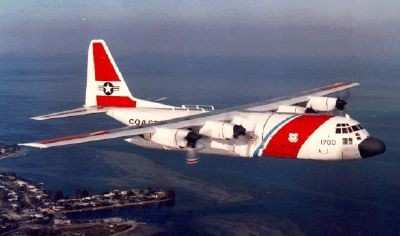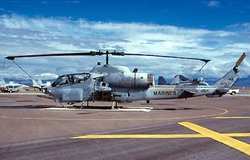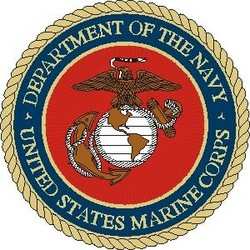No Single Factor Caused The Accident, But Some Finger-Pointing
Is Contained In Reports
The Navy, Marine Corps and the Coast Guard have each
released reports concerning a mid-air collision last October in
which a Coast Guard HC-130 Hercules aircraft and a Marine AH-1W
Cobra collided off the southern California coast. Nine service
personnel were lost in the accident.

HC-130 File Photo
In a joint news release, the Navy, Marine Corps, and Coast Guard
said all the investigations concluded that no single factor, person
or unit caused the mishap, but that it was a tragic confluence of
events. The three command investigations also concluded there was
no misconduct on the part of any Coast Guard, Marine Corps or Navy
personnel, and all three made recommendations for improving
procedures, training and aviation safety.
“We are using what we found in these investigations to
improve aviation safety,” said Rear Adm. Joseph Castillo,
Commander of the 11th Coast Guard District. “We are committed
to preventing a recurrence of this terrible tragedy. We owe nothing
less to the memories of the dedicated men and woman lost in the
crash, their families, their shipmates, and the public,” he
said.

AH-1W Cobra File Photo
Military officials did not wait for the investigations to be
completed to begin safety improvements, according to the news
release. Immediately after the accident the services began
reviewing policies and procedures and have already implemented many
of the recommendations in the reports.
Castillo noted that aviators and technical experts from all
three branches of the naval aviation community brought their own
unique expertise, experience, and perspectives to the
investigations. “The range of opinions and recommendations
strengthens our common effort of improving aviation safety,”
he said. “The services have worked closely throughout the
investigations and will continue to do so as we implement
changes.”
The Coast Guard plane, based in Sacramento, CA, was conducting a
search and rescue mission and the Marine helicopter, based at Camp
Pendleton, was involved in training when the two aircraft collided.
Both aircraft were operating in a training area monitored by a Navy
air traffic control center in San Diego.

In its report, the Coast Guard said that a contributing factor
to the accident was that the San Diego Navy Air Traffic Controllers
"did not provide operational priority" to the Coast Guard aircraft
involved in the SAR operation. "The FAA operational priority for
SAR missions is third, immediately following aircraft emergencies
and air medical evacuations. There were no higher priority missions
in (the area where the accident occurred) at the time of the
mishap," the report reads.
The Marine Corps report details the different flights operating
in the area where the SAR effort was taking place, including a
flight of F/A-18 Hornets and a flight of four helicopters. It says
that "(n)either CG1705 (the CH-130) nor Vengeance 38 (the
helicopter) were under positive radar control of controllers
assigned to FACSFAC SD (military air traffic control) at the time
of collision; as such these aircraft were not provided control
instructions by air traffic controllers that resulted in the
convergence of the two mishap aircraft. Additionally, there was no
agreement made between aircraft and controllers that transferred
responsibility for the safe navigation of the aircraft from the
aircrews to the air traffic controller.

"CG1705 and V38 (and to a certain extent the rest of the VH53
flight,the report states) failed to maintain the proper visual
lookout to ensure necessary separation to prevent the midair
collision. Both aircraft were operating under visual flight rules
and were ultimately responsible for their own safety, navigation,
and separation from other aircraft."
 ANN's Daily Aero-Linx (04.30.25)
ANN's Daily Aero-Linx (04.30.25) ANN FAQ: Turn On Post Notifications
ANN FAQ: Turn On Post Notifications Classic Aero-TV: Agile Aeros Jeff Greason--Disruptive Aerospace Innovations
Classic Aero-TV: Agile Aeros Jeff Greason--Disruptive Aerospace Innovations Aero-News: Quote of the Day (04.30.25)
Aero-News: Quote of the Day (04.30.25) ANN's Daily Aero-Term (04.30.25): Expedite
ANN's Daily Aero-Term (04.30.25): Expedite






